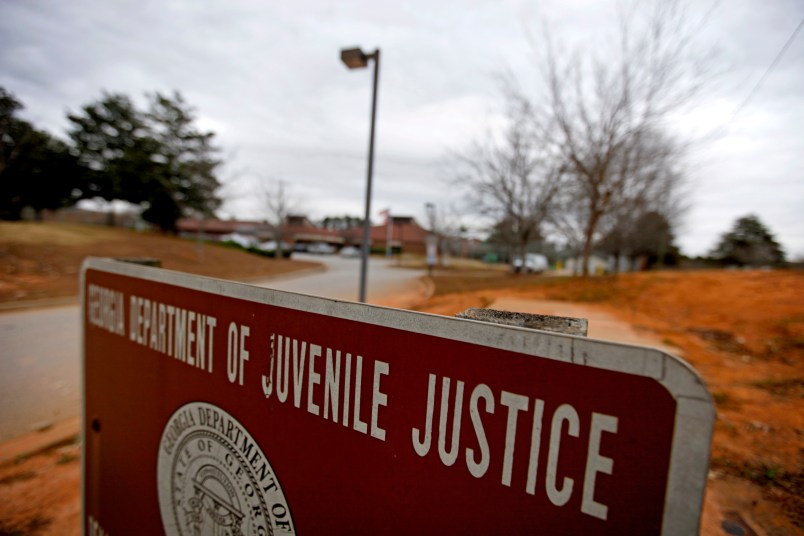If you miss one too many days of work or stay out for the night when you said you’d be home, you might find yourself in hot water, but chances are you won’t wind up in trouble with the law, or worse, in jail.
While this is true for adults, it’s a different reality for kids who break curfew, show up to school late one too many times, or commit other non-violent status offenses – actions that wouldn’t be a crime if they were carried out by an adult.
Every year, an estimated 10,000 youth are incarcerated for non-violent status offenses. These kids often lack support networks, come from broken homes or have mental health needs that contribute to their behaviors. Incarceration has not been shown to help overcome this. Instead, thousands of youth are placed in facilities that expose them to violence, disconnect them from their families and communities, and offer few pathways for rehabilitation. Because of their confinement, the chances they will come into contact with the law again are increased.
This doesn’t just hurt the kids, it hurts taxpayers. The overreliance on incarceration of non-violent youth comes with a hefty annual price tag – as much as $100,000 per child in some states – in addition to the long-term costs to victims and taxpayers that are incurred when too many kids leave lockup more troubled than when they arrived. In other words, the last place where these kids should be is incarcerated.
Fortunately, we’ve begun to see a gradual reduction of the number of youths in residential confinement brought on by policy reforms at the state and federal level that have taken place over the past few decades. Together, these reforms helped begin to turn the rising tide of juvenile status offenders in confinement.
Between 1977 and 1997, the nation saw a 54 percent decline in the number of juvenile status offenders in residential placement. This period was significant because it began with efforts by Congress to reign in the rise in status offenders in 1977 through an amendment to the Juvenile Justice and Delinquency Act of 1974, and ended with an era when juvenile courts relied more heavily on punitive measures for all offenses.
This continued over the past decade with a 52 percent reduction in youth confined for status offenses between 2001 and 2011, with an encouraging acceleration between 2010 and 2011. While we’ll have to wait and see if this was a mere aberration or a new turning point in this positive reform effort, it’s clear that things are moving in the right direction.
However, far too many young, non-violent misbehavers are still locked up for behaviors that pose no threat to public safety. According to data from the Federal Bureau of Investigation, only 5 percent of kids who have been arrested have committed a violent crime, yet the other 95 percent often are sent to the same facilities.
The solutions to decriminalize status offenses are at our finger tips. Community-based supervision and treatment programs have been proven to more cost-effectively address the developmental needs that contribute to status offending behaviors, while also giving parents the tools they need to provide more structure for their child. We should look to expand these types of innovative programs in order to reduce our over-reliance on residential placements.
But that only addresses the backend of the problem. If we are going to make meaningful reforms to the system, we’re going to have to make bigger policy changes by reforming the valid court order exception (VCO), which allows judges to confine and adjudicate status offenders who fail to show up for say a court hearing.
Congress paved the way for VCOs in order to allow judges to play a larger role in the lives of juvenile status offenders, but it had an unintended consequence in that it resulted in a dramatic increase of confined youth status offenders. In 2007 alone, the Office of Juvenile Justice and Delinquency Prevention reported that as many as 12,000 additional youth status offenders were detained for violating a VCO. This is clearly an overly prescriptive measure and should only be applied to youths who have a prior non-status offense and are determined to be at high-risk of future delinquent behavior, through a validated risk-assessment.
Finally, we need to rethink how we handle status offenders in general by placing a greater emphasis on educational, mental health, child welfare programs rather than institutional facilities. Family and child welfare programs are better suited to rehabilitate a child and return them to society than a system that confines youths with more serious offenders, which only helps to exacerbate the problem and create real criminals down the road.
We’ve made huge progress in reducing the number of juveniles confined in the U.S. and can continue to do so by working together to advance cost-effective policy reforms that keep our kids in school rather than in the courtroom or residential facility.
Marc Levin, is a director of the Center for Effective Justice at the Texas Public Policy Foundation, which recently authored the report: “Kids Doing Time for What’s Not a Crime: The Over-Incarceration of Status Offenders”






